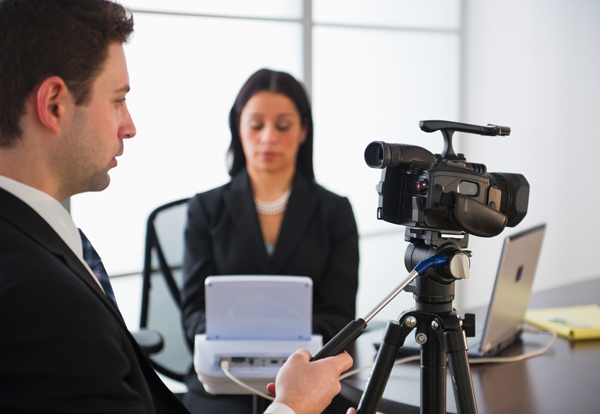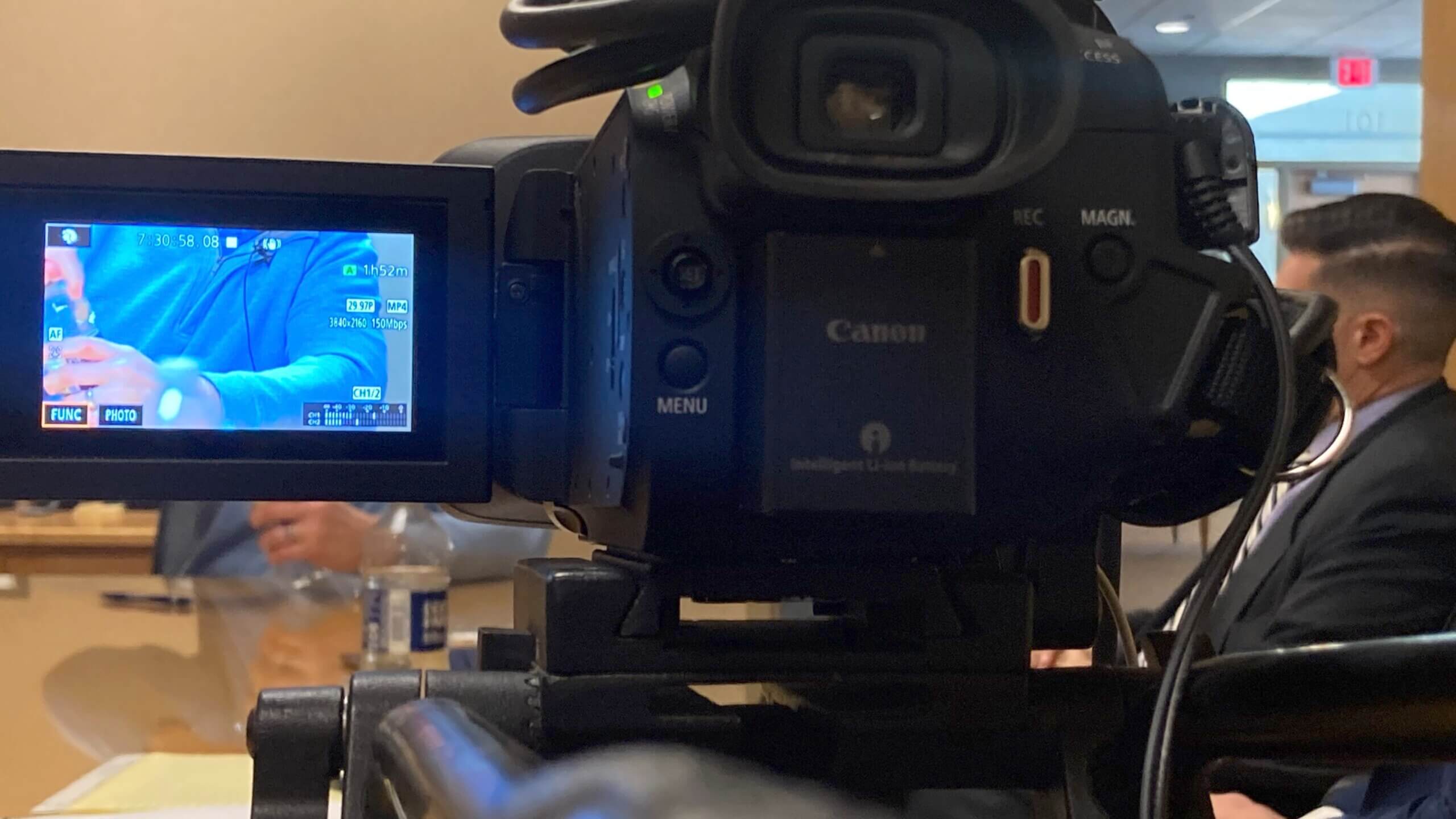How Legal Videography Can Make or Break Your Legal Strategy
How Legal Videography Can Make or Break Your Legal Strategy
Blog Article
Diving Into the Devices of Lawful Videography: Unveiling Its Procedure in Safeguarding Authentic Aesthetic Statement for Judicial Process
In the realm of judicial process, the role of legal videography stands as a foundation in maintaining and providing visual proof. As technology proceeds to breakthrough, the systems behind lawful videography have become progressively detailed, offering a vital layer of credibility to testimonies captured on video.
Historic Advancement of Lawful Videography
Examining the historical development of lawful videography discloses a considerable change in the recording and presentation of aesthetic proof within the legal landscape. In the past, legal process heavily relied upon composed records and photographs to document events and give proof. With the development of video clip modern technology, the lawful sector saw a paradigm change in exactly how visual statement was caught and offered.
The development of legal videography can be mapped back to the late 20th century when innovations in video clip recording devices made it much more available for usage in courts. This technological improvement not only improved the precision and reliability of aesthetic proof however additionally revolutionized the method situations existed to courts and judges (Legal Videography). Attorneys started to acknowledge the convincing power of video clip recordings in conveying feelings, nuances, and non-verbal cues that composed pictures or records alone might not catch properly

Technology Advancements in Video Paperwork
What crucial technical developments have revolutionized video clip paperwork in the legal field? The lawful field has actually seen considerable innovations in video clip documents modern technology that have boosted the authenticity and integrity of aesthetic proof in judicial process. One of the crucial improvements is high-def (HD) video recording capacities, which provide crystal-clear pictures and sharp details that are critical for properly catching testimonies, face expressions, and various other aesthetic hints. Additionally, the integration of timestamping and metadata features in video clip documentation devices has made it possible for exact paperwork of when and where the video clip was tape-recorded, guaranteeing the integrity of the evidence offered in court.
In addition, innovations in video file encryption and watermarking innovations have bolstered the protection and tamper-proof nature of video clip proof, protecting it versus unauthorized modifications or tampering. The development of cloud storage options and remote access capabilities has streamlined the storage, retrieval, and sharing of video evidence, assisting in smooth cooperation among lawful professionals and making certain reliable accessibility to important aesthetic testimonies when required. These technical improvements in video documents have most certainly changed the lawful field, enhancing the accuracy, reliability, and admissibility of visual evidence in judicial procedures.
Function of Lawful Videographers in Court Room Settings
The advancement of video documents innovation in the lawful field has demanded a crucial role for lawful videographers in court setups, ensuring the integrity and dependability click to read more of visual statements offered during judicial procedures. Lawful videographers play a fundamental role in catching and preserving exact aesthetic proof that can be pivotal in court cases. Their duty expands to establishing devices, recording process, and generating premium video clips that precisely mirror the occasions in the court room.
In court room setups, lawful videographers should abide by strict standards and criteria to keep the credibility of the visual record. They have to possess a keen eye for information and a thorough understanding of legal treatments to make certain that the video they record is a true representation of the events that transpired. Additionally, lawful videographers frequently work very closely with legal teams to make certain that the video evidence aligns with the instance's demands and can be effectively provided in court to sustain the lawful disagreements being made. Overall, the duty of lawful videographers in court setups is vital in supporting the concepts of justice and guaranteeing the openness of lawful process.

Ensuring Admissibility and Stability of Video Evidence
To preserve the integrity of visual evidence offered in lawful procedures, making certain the admissibility and integrity of video evidence is a critical responsibility for legal videographers. Admissibility refers to the approval of proof by the court, and for video clip proof to be permissible, it needs to fulfill particular requirements. Legal videographers play a vital role in guaranteeing that the video clips they capture follow the rules of evidence, such as significance, authenticity, and dependability.
Integrity of video clip proof involves preserving the originality and precision of the video footage from the time it is taped up until it exists in court. This includes securely keeping the video files, documenting the chain of protection, and preventing any tampering or modifications. Lawful videographers have to stick to stringent protocols to guarantee the honesty of the video evidence and stop any obstacles to its credibility.
Future Trends in Legal Videography
Offered the enhancing reliance on modern technology in legal process, legal videographers are poised to accept innovative advancements shaping the future of aesthetic testament capture and discussion. One of the popular fads imminent is the assimilation of digital reality (VR) and enhanced fact (AR) modern technologies right into lawful videography. These innovations have the potential to revolutionize exactly how aesthetic evidence exists in courtrooms, allowing courts and juries to submerse themselves go to the website in the scene of the criminal activity or occurrence.
In addition, using expert system (AI) formulas for video analysis is anticipated to improve the procedure of evaluating and examining large quantities of video clip footage. AI can assist in recognizing vital minutes, abnormalities, and patterns within videos, improving the performance of legal investigations.

Verdict
In verdict, legal videography has played a critical duty in giving genuine aesthetic evidence for judicial proceedings. With technical improvements and the knowledge of lawful videographers, the honesty and admissibility of video clip proof are made certain in court room settings. As lawful videography proceeds to advance, it will certainly be important to maintain standards that maintain the precision and reliability of aesthetic testament for the future of legal process.
Examining the historic progression of lawful videography exposes a substantial change in the catching and discussion of aesthetic evidence within the legal landscape.The development of video clip documents technology in the legal field has actually demanded an important duty for lawful videographers in court room settings, guaranteeing the honesty and integrity of aesthetic testaments offered during judicial proceedings. Additionally, legal videographers commonly function very closely with lawful groups to make certain that the video clip evidence aligns with the case's requirements and can be efficiently provided in court to support the legal arguments being made.To preserve the integrity of aesthetic proof offered in lawful procedures, making sure the admissibility and honesty of video clip proof is an important duty for lawful videographers. As lawful videography proceeds to develop, it will be vital to maintain criteria that keep the precision and reliability of visual testimony for the future of legal procedures.
Report this page